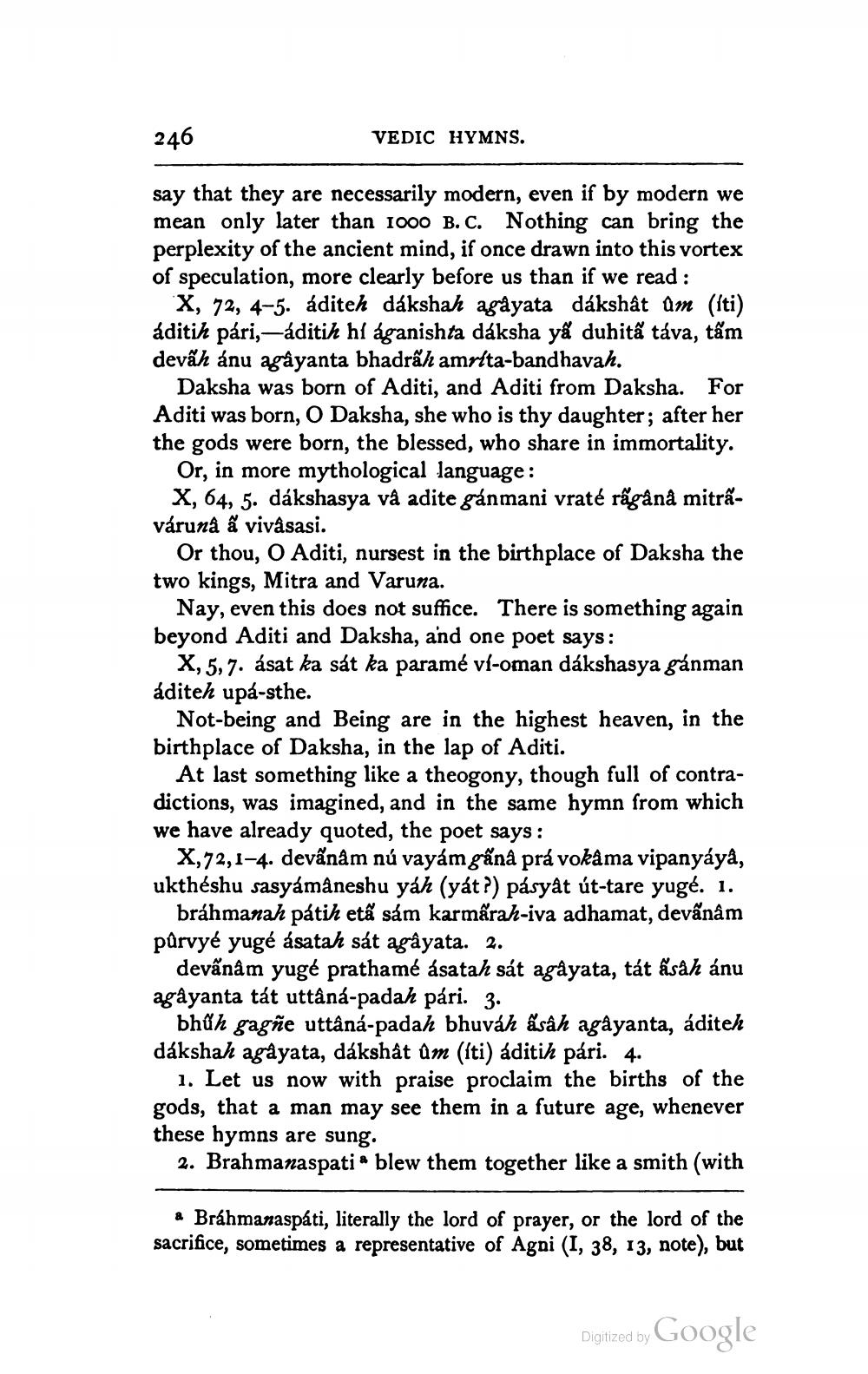________________
246
VEDIC HYMNS.
say that they are necessarily modern, even if by modern we mean only later than 1000 B.C. Nothing can bring the perplexity of the ancient mind, if once drawn into this vortex of speculation, more clearly before us than if we read:
X, 72, 4-5. áditeh dákshah agayata dákshât am (sti) áditih pári,-áditih hl áganishta dáksha yå duhitã táva, tấm devấh ánu zgâyanta bhadrâh amrita-bandhavah.
Daksha was born of Aditi, and Aditi from Daksha. For Aditi was born, O Daksha, she who is thy daughter; after her the gods were born, the blessed, who share in immortality.
Or, in more mythological language:
X, 64, 5. dákshasya va adite gánmani vraté rágånå mitrãvárunà a vivâsasi.
Or thou, O Aditi, nursest in the birthplace of Daksha the two kings, Mitra and Varuna.
Nay, even this does not suffice. There is something again beyond Aditi and Daksha, and one poet says: | X, 5, 7. ásat ka sát ka paramẻ vi-oman dakshasya gánman áditeh upá-sthe.
Not-being and Being are in the highest heaven, in the birthplace of Daksha, in the lap of Aditi.
At last something like a theogony, though full of contradictions, was imagined, and in the same hymn from which we have already quoted, the poet says:
X,72,1-4. devấnám nú vayám gânâ prá vokama vipanyaya, ukthéshu sasyámâneshu yah (yát?) pásyât út-tare yugé. 1.
brahmanah pátih etã sám karmấrah-iva adhamat, devấnâm purvye yuge 4satan sát agayata. 2.
devấnâm yugé prathamé ásatah sát agayata, tát âsâh ánu agayanta tát uttâná-padah pári. 3.
bhűh gagñe uttana-padah bhuváh ásah agâyanta, áditeh dákshah agayata, dákshât um (Iti) aditih pári. 4.
1. Let us now with praise proclaim the births of the gods, that a man may see them in a future age, whenever these hymns are sung.
2. Brahmanaspati blew them together like a smith (with
a Brahmanaspáti, literally the lord of prayer, or the lord of the sacrifice, sometimes a representative of Agni (I, 38, 13, note), but
Digitized by
Digitized by Google




